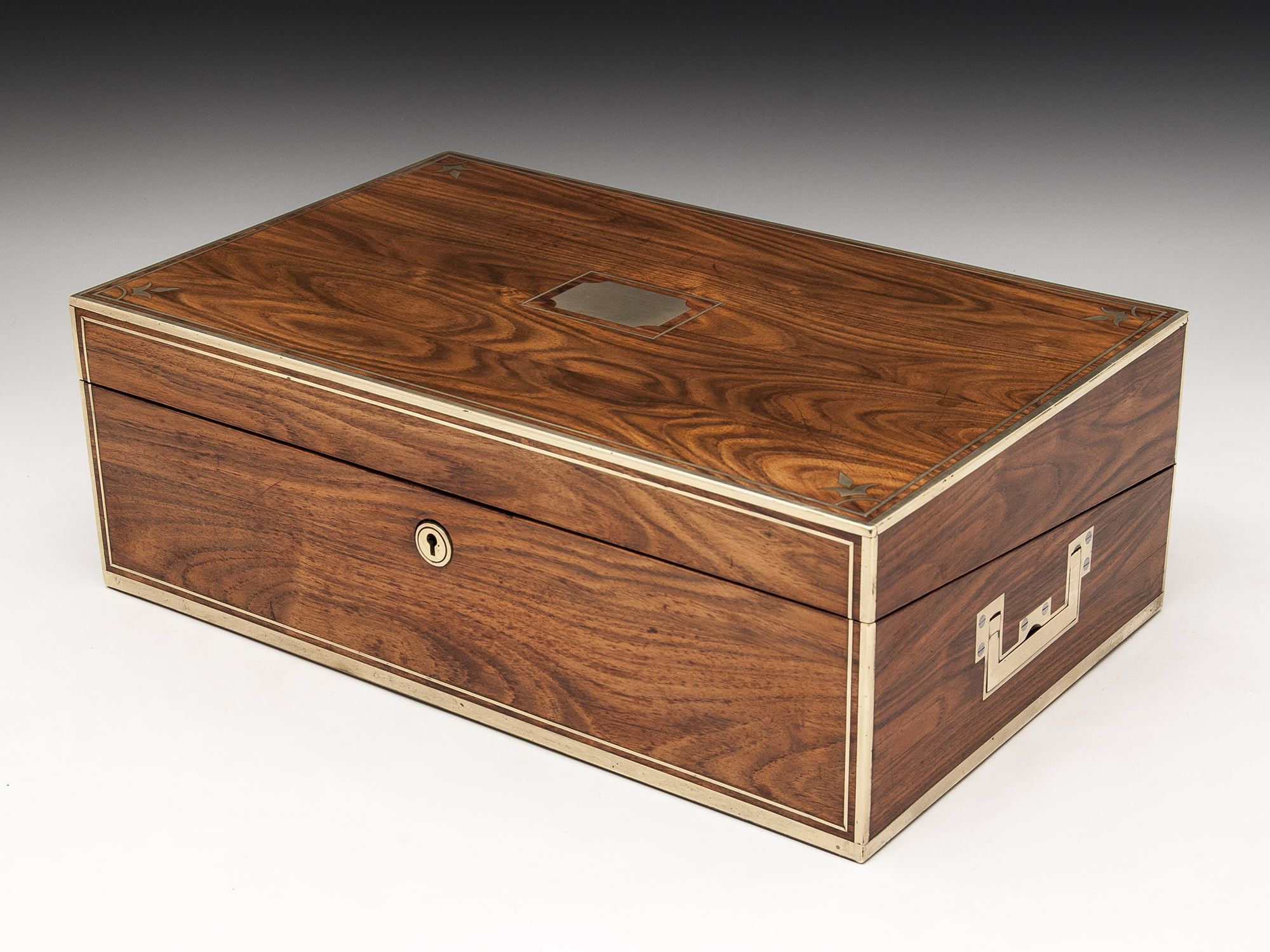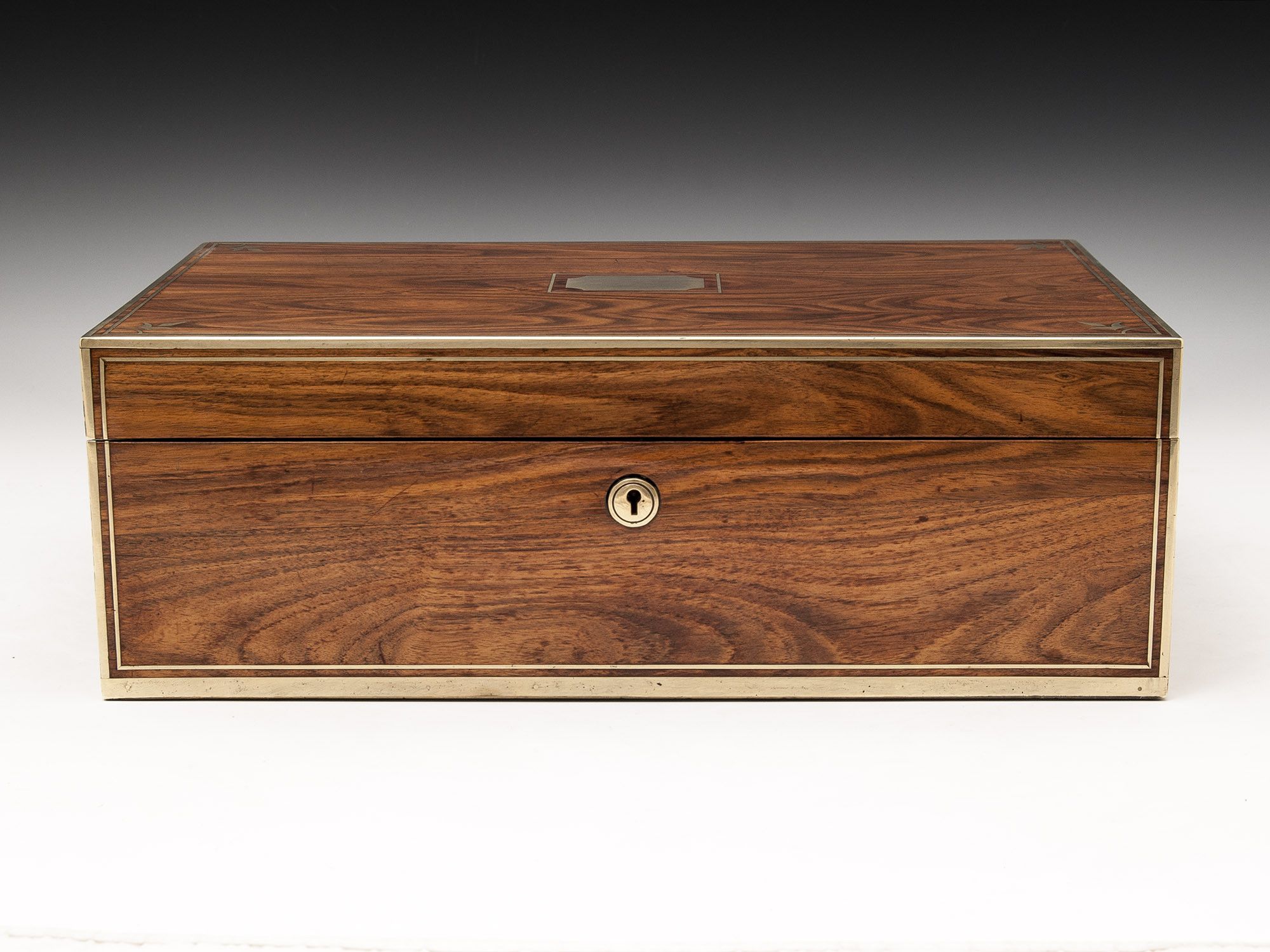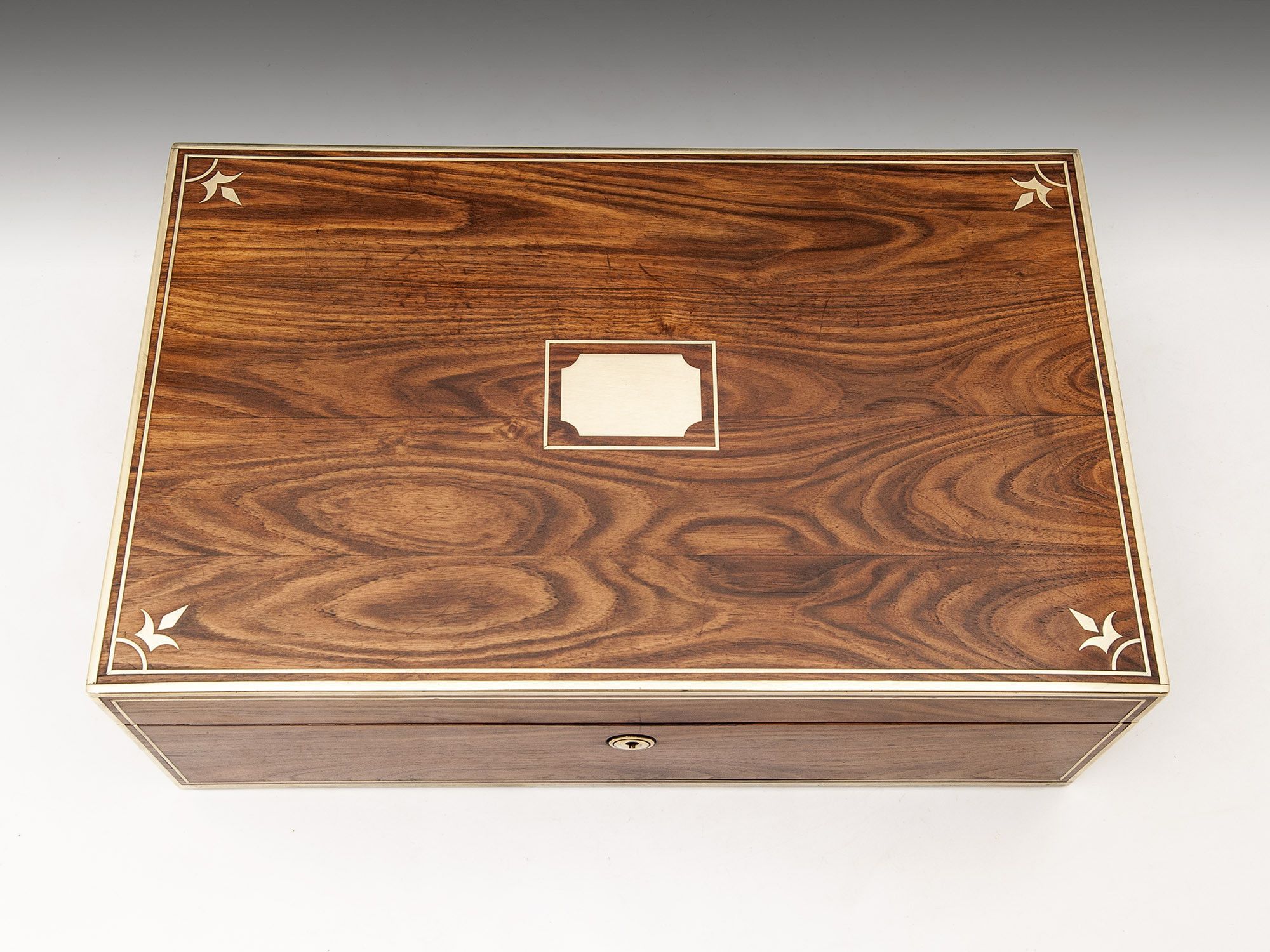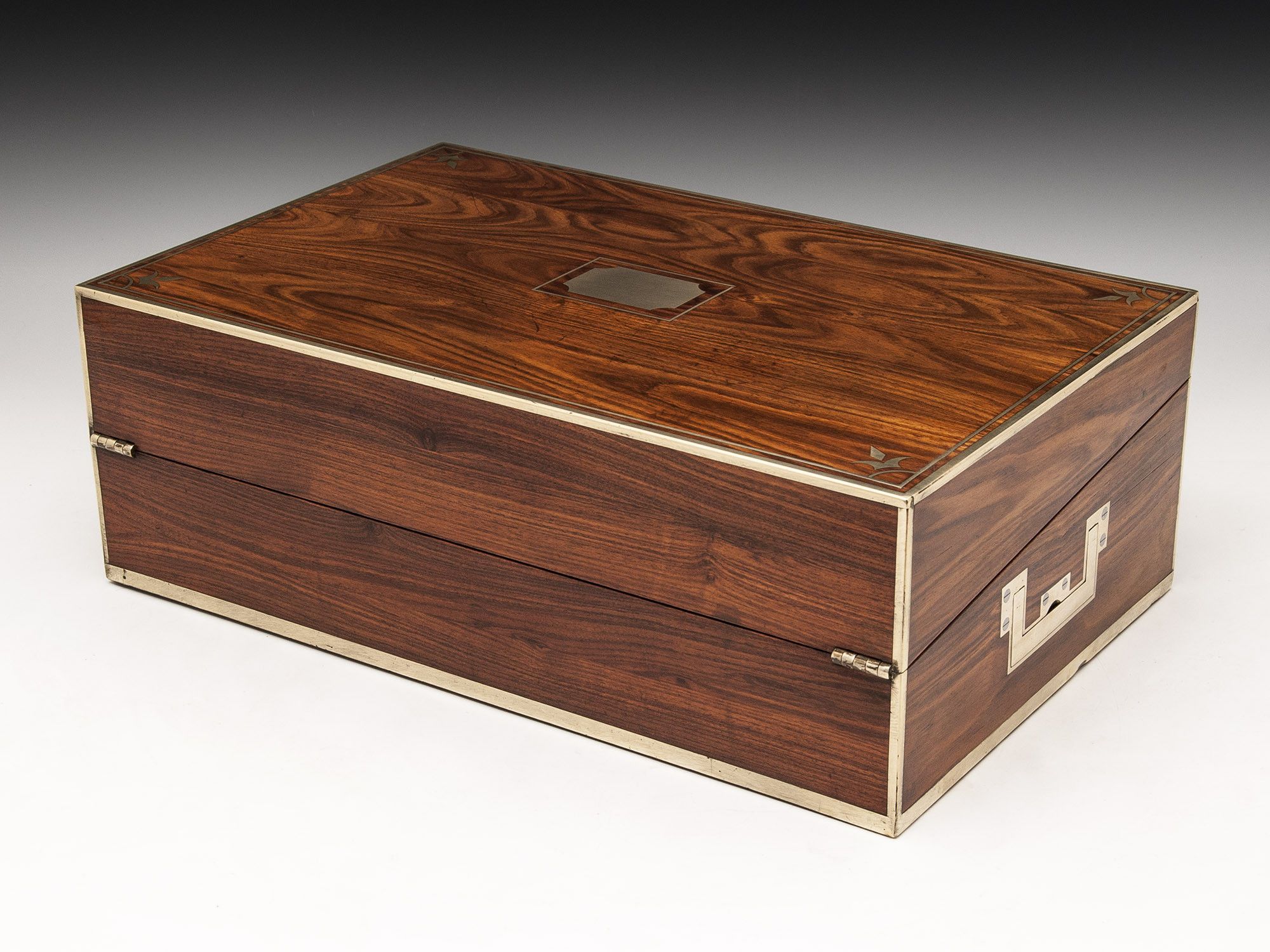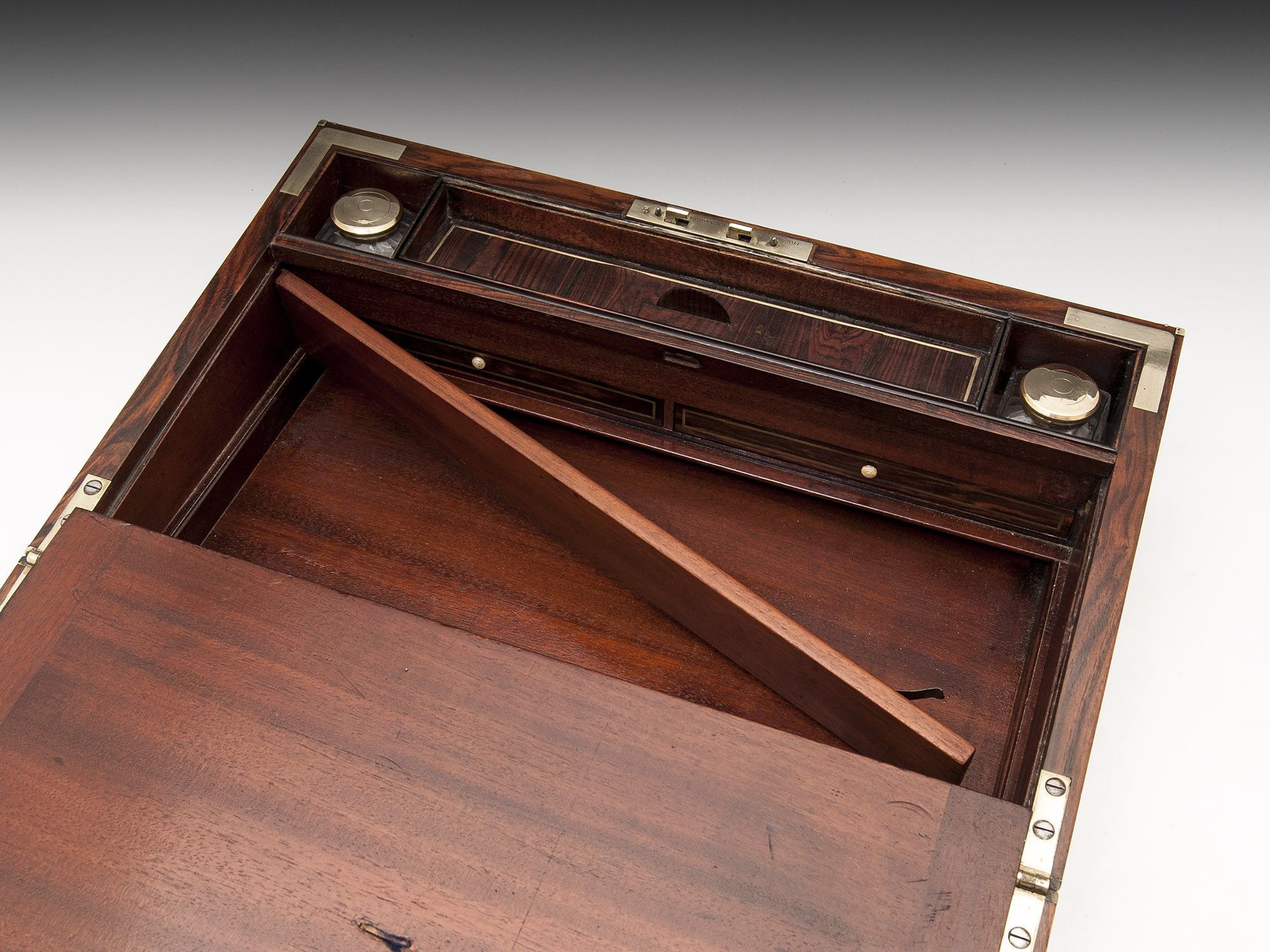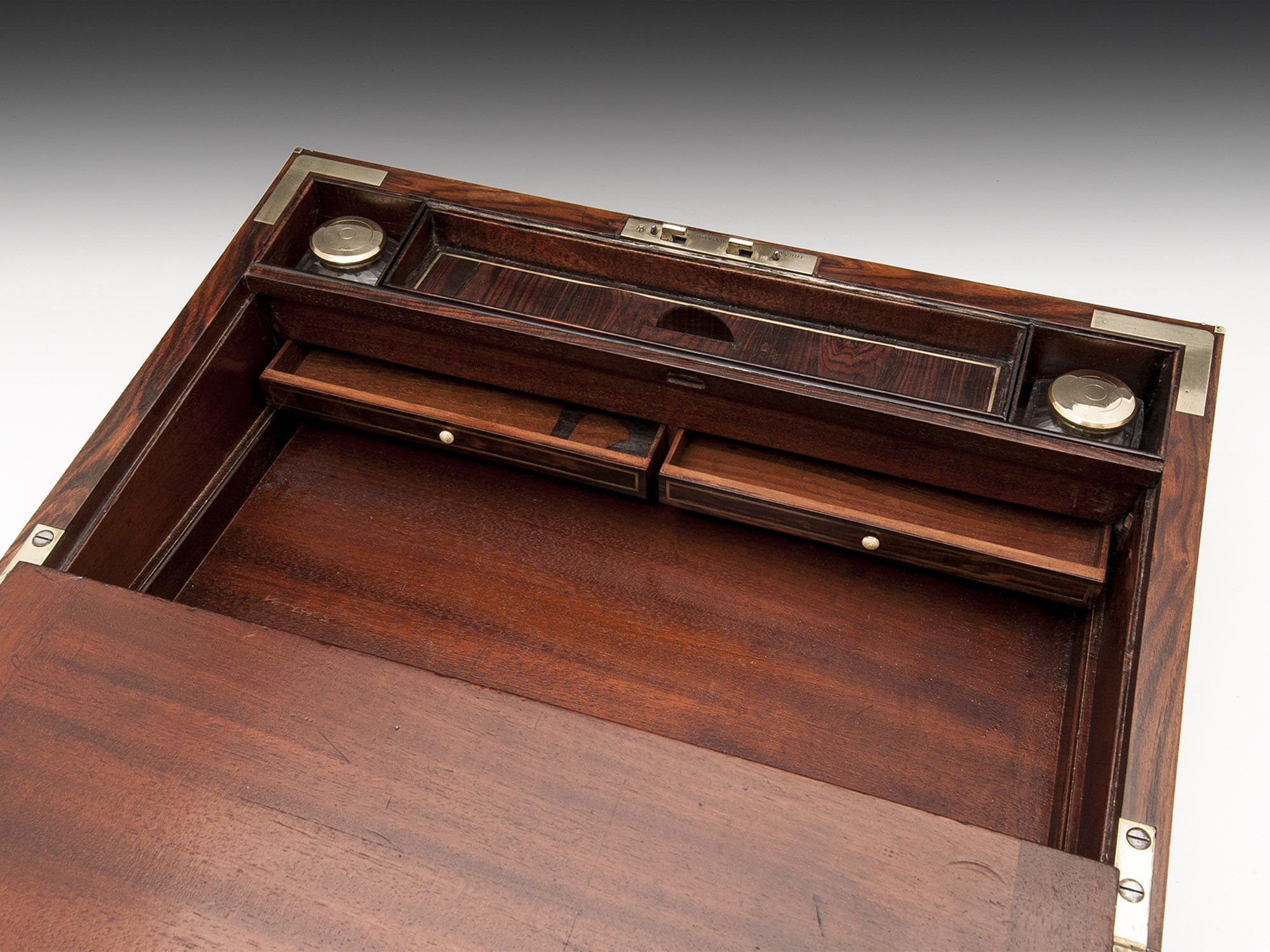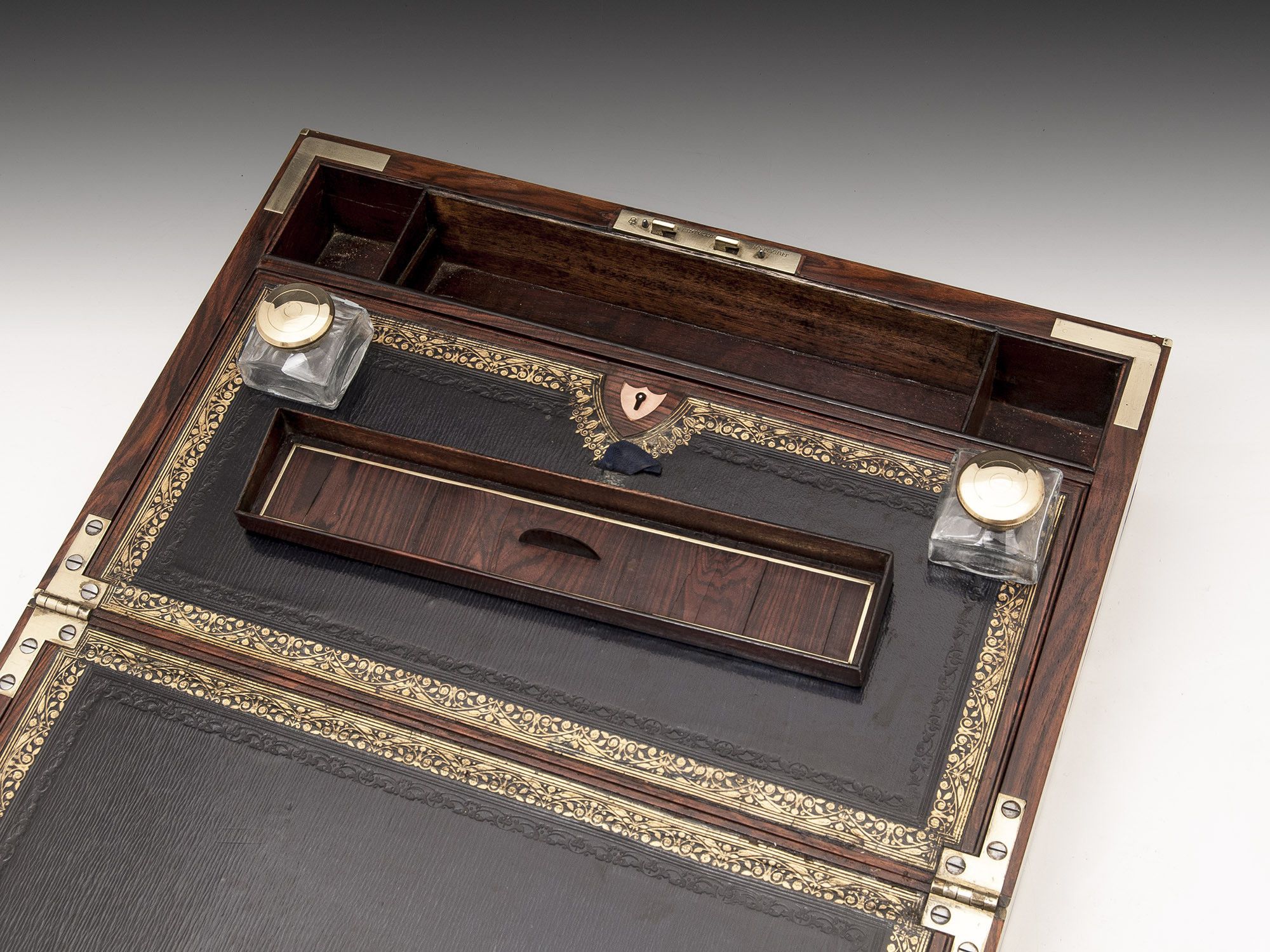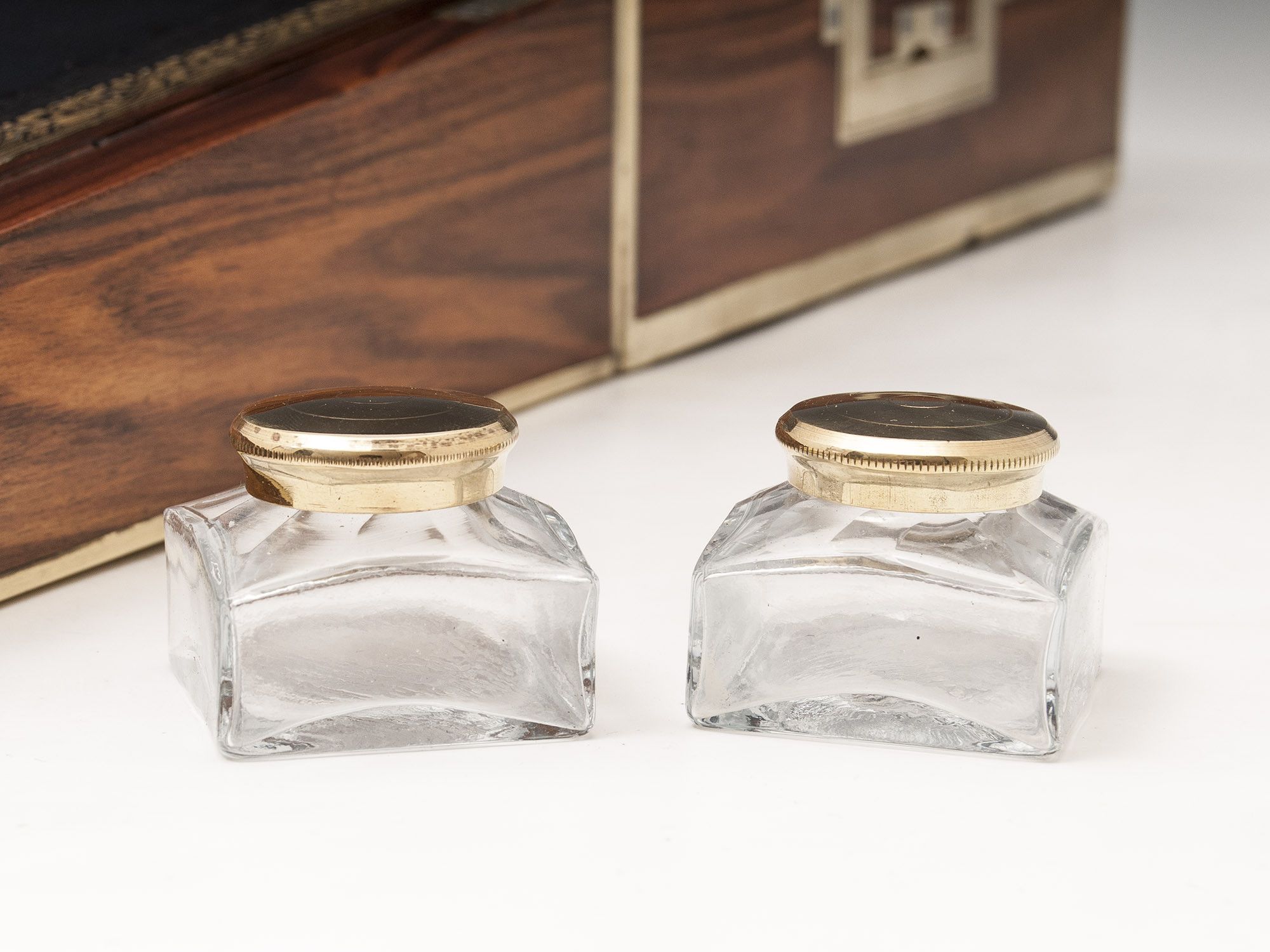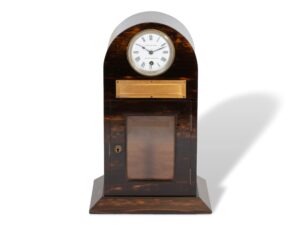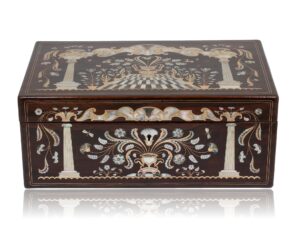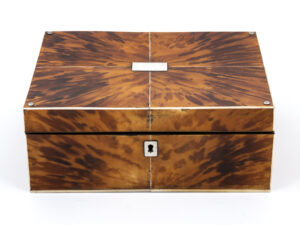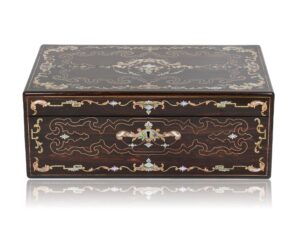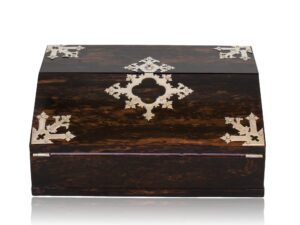DAVID EDWARDS Regency Kingwood Writing Box
SOLD
Antique Writing boxveneered in stunning Kingwood with decorative brass inlays, ornate escutcheon, flush fitting brass campaign carrying handles and has a secret compartment containing two drawers. This fabulous writing box has all the high quality cabinet work and craftsmenship of... Read More
| Dimensions | 41 × 25.5 × 14 cm |
|---|---|
| Country | |
| SKU | 203816 |
Description
Description
Antique Writing boxveneered in stunning Kingwood with decorative brass inlays, ornate escutcheon, flush fitting brass campaign carrying handles and has a secret compartment containing two drawers. This fabulous writing box has all the high quality cabinet work and craftsmenship of David Edwards workshop, pen tray, brass inlay, leather and choice of veneer are huge indicators for us to attribute this to Edwards.
The interior of this wonderful regency writing slope features its original navy blue and gold tooled writing surface, two replacement brass screw top ink wells and a removable kingwood brass strung tray for holding pens and pencils. The bottom half of the writing surface lifts up to reveal a cross ribboned back and storage area. Underneath the top half of the writing surface is further storage and a secret hidden compartment containing two beautifully dovetailed drawers veneered in kingwood and inlaid with fine brass, these can be accessed by removing the right hand inkwell, and pressing on the outer wall of its compartment.
This writing box comes with a fully working Bramah lock and tasselled key.
More information on David Edwards.
David Edwards of 21 King Street, Bloomsbury Square was Writing Box and Case maker to the Royal family and inventor of the patent military travelling case. He also made tea chests, jewellery boxes, sewing boxes and canteen cases of the highest quality. He and his brother Thomas were also known to have worked from James Street and Orange Street. Edwards was known for using the highest quality timbers, intricate inlaid brass, decorative handles and complex mechanisms for secret compartments. He was bough out by Asprey in 1859 and had two royal warrants from King George IV and Queen Victoria.
Kingwood
Kingwood, also known as Violetwood, is found in South America and is violet-brown in colour with a darker grain. It is a very dense and hard wood that is only available for smaller items due to the small tree that yields it.
All our items come with authentication certificate with image, as well as our latest catalogue, how to look after your antique booklet, care instructions and separate invoice for insurance purposes. On top of this our items come with 14 day no quibble money back guarantee and are all fully insured for when shipping.
Hampton Antiques stock many different styles of Writing Box. The Writing Box symbolises great milestones in social & economic history.
For many centuries, and in many cultures, portable boxes for writing materials had existed. In England, it was not until the late 18th century that a variation in social & economic circumstances made it essential to have the use of a portable desk in the form of a box which could be used on a lap or table. The Writing Box, or Lap Desk, was born!
The first writing boxes symbolised intelligence, knowledge of commerce and the world, with style and fashion being a lesser priority at this time. For around 100 years from the late 1700s, the writing box featured strongly on military expeditions, travels, libraries and in drawing rooms. Famous literature, contracts, letters and postcards were written on it. The Writing Box was a personal possession, unlike the writing desk or table.
In the late 1700s, worldwide travel was not a simple affair. Travellers of all kinds, as well as Military staff needed compact & strong boxes, which could stand the test of long & arduous journeys. As a result, the Military, or Campaign box was created. The Captain’s, or Campaign Writing Box is much more mechanically complex and quite intriguing! These boxes are generally brass-bound, have secret drawers, candlesticks & a screw-down mechanism which comes out the bottom of the box and fixes it to a piece of furniture or ships deck, for security purposes but for particularly rough sea voyages. Boxes we come across of this style are rarely the same in terms of arrangement of secret compartments & drawers, adding to their character. Campaign & Military style Boxes were made and used well into the 19th century. Charles Dickens and Lord Byron were famous users of this type of Box.
In the early to mid 1800s letter writing became a hugely popular pass-time, especially amongst women – in particular, society ladies! This can be demonstrated by the smaller, lighter & more decorative styles made during this period. Features of these boxes include: the front cover of the box opens back to reveal a sloping surface for writing. This consists of a flap, under which paper can be stored. At the back is a section for inkwells and pens. Some of the most exquisite boxes date from this period.
The use of Lap Desks remained until late Victorian times when their popularity started to decrease, as they became more mass-produced & of lower quality.
We get great pleasure from acquiring and restoring these wonderful boxes. We often discover compartments that appear to have been untouched and forgotten about over the years. They often need replacement writing surfaces due to their age and continued use. We always try to restore as sympathetically as possible, so to do this we have our own antique leathering & book binding tools to restore the box to its formal glory.
Created By:
DAVID EDWARDS (worked from c.1800)
Additional information
Additional information
| Dimensions | 41 × 25.5 × 14 cm |
|---|---|
| Country | |
| SKU | 203816 |

